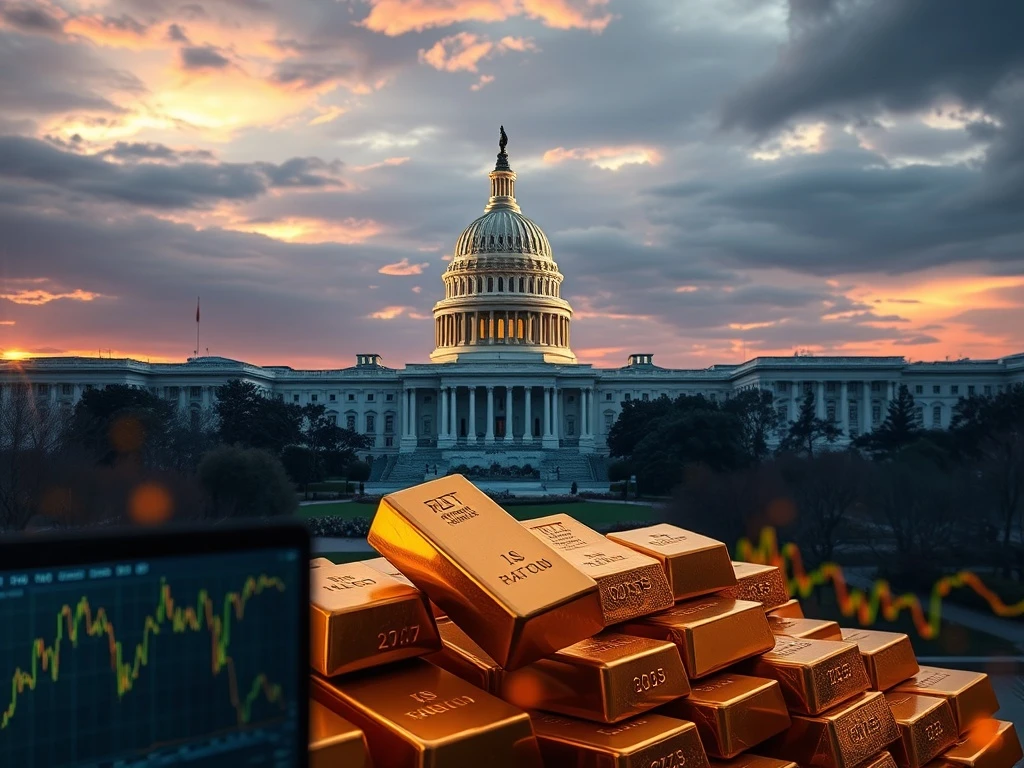Former President Donald Trump’s recent comments challenging Federal Reserve independence have sent shockwaves through financial markets, potentially positioning gold as the premier safe haven for cautious investors. This development comes at a critical juncture for monetary policy and investment strategy.
Understanding the Federal Reserve Independence Debate
Central bank independence represents a cornerstone of modern monetary policy. Consequently, political challenges to this autonomy create significant market uncertainty. Trump’s statements question traditional Fed operations, thereby increasing volatility expectations. Investors traditionally seek stable assets during such periods of potential disruption.
Gold as the Ultimate Safe Haven Asset
Gold historically performs exceptionally well during monetary policy uncertainty. Unlike fiat currencies, gold maintains intrinsic value regardless of political pressures on central banks. Furthermore, gold prices often inversely correlate with dollar strength and interest rate expectations. This makes precious metals particularly attractive when Fed independence faces challenges.
Key advantages of gold include:
- No counterparty risk
- Global recognition as value storage
- Inflation protection qualities
- Limited supply characteristics
Historical Precedents for Safe Haven Flows
Previous episodes of political pressure on central banks consistently drove capital toward hard assets. For instance, gold rallied significantly during previous administrations’ criticisms of Fed policy. Similarly, other periods of monetary policy uncertainty saw substantial gold appreciation. Investors clearly recognize gold’s role as protection against institutional uncertainty.
Current Market Implications and Investment Considerations
Market analysts observe increased gold ETF inflows following political Fed commentary. Simultaneously, gold mining stocks show unusual option activity. These developments suggest sophisticated investors positioning for prolonged monetary policy uncertainty. Portfolio managers increasingly recommend gold allocations as hedge against potential policy shifts.
Comparative Safe Haven Analysis
While Treasury bonds traditionally serve as safe havens, their value depends on Fed credibility. Conversely, gold maintains value independently of central bank policies. Other alternatives like cryptocurrencies lack gold’s historical track record during monetary crises. This unique position strengthens gold’s appeal during Fed independence debates.
Long-term Investment Strategy Implications
Financial advisors suggest maintaining gold allocations regardless of short-term political developments. However, increased Fed scrutiny might justify larger precious metal positions. Investors should consider physical gold, ETFs, and mining stocks for diversified exposure. Regular portfolio rebalancing remains crucial amid changing monetary policy landscapes.
FAQs
Why does Fed independence matter to gold investors?
Fed independence ensures monetary policy decisions based on economic data rather than political pressure, creating stability that reduces gold’s safe haven appeal.
How much gold should investors hold during Fed uncertainty?
Most advisors recommend 5-10% portfolio allocation to gold and precious metals during periods of central bank policy uncertainty.
What other assets benefit from Fed independence challenges?
Other inflation-resistant assets like real estate and commodities often appreciate alongside gold during monetary policy uncertainty.
How quickly do gold prices typically react to Fed political pressure?
Gold markets usually respond within days to political developments affecting central bank independence, though sustained moves require prolonged uncertainty.
Does physical gold outperform gold ETFs during such periods?
Both typically move together, though physical gold avoids counterparty risk while ETFs offer greater liquidity for most investors.
What historical periods show similar patterns?
The 1970s gold rally occurred amid high inflation and political pressure on Fed policy, similar to current concerns about central bank independence.








